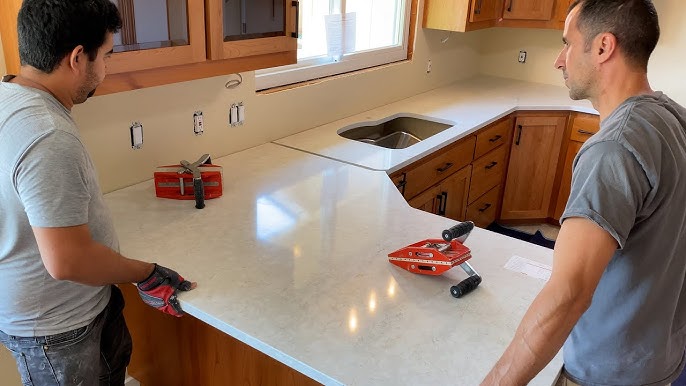Granite is a durable, attractive, and versatile material that is often used for countertops, tiles, and other decorative or functional surfaces. However, working with granite requires specific tools and techniques to ensure a professional-quality finish. The process of cutting, polishing, and sealing granite involves several key stages, each of which requires precision and care. To begin with, cutting granite is the first and perhaps most challenging task. Since granite is an incredibly hard stone, it cannot be cut with conventional tools. A high-quality diamond blade or a diamond-tipped saw is essential for making accurate cuts. When preparing to cut, it is important to measure and mark the stone carefully. The blade needs to be kept wet during the process to reduce heat and dust, which can damage both the stone and the equipment. For larger projects, a bridge saw may be used, as it offers stability and more control over the cutting process.

Once the granite has been properly cut, the next step is to polish it. Polishing granite brings out its natural beauty and shine. This process can be done by hand or with a polishing machine. For hand polishing, a series of progressively finer diamond polishing pads are used, starting with a coarse grit and moving towards a finer one. If using a polishing machine, ensure that it is fitted with a water reservoir to prevent overheating and to help reduce dust. The polishing process can take time, as each pad removes tiny layers of stone, creating a smoother, shinier surface. It is important to work in a consistent, circular motion to avoid any uneven areas on the granite surface. After polishing, sealing the granite is crucial for maintaining its durability and appearance. Granite is a porous material, and without sealing, it can absorb liquids, leading to staining and discoloration. A high-quality stone sealer is applied after the surface is polished and cleaned. The sealer should be chosen based on the specific type of granite and the intended use of the surface.
Some sealers work by penetrating the stone, while others create a protective layer on the surface. The sealer is applied evenly with a cloth or sponge and allowed to penetrate for a specified amount of time before being wiped away. After sealing, it is best to wait at least 24 hours before using the granite to ensure that the sealer has fully cured. Granite maintenance does not end with cutting, polishing, and sealing. It is also important to clean the stone regularly with pH-balanced cleaners to avoid damaging the surface. Additionally, granite should be resealed every one to two years, depending on the amount of use and the type of sealer used and visit https://www.thepinnaclelist.com/articles/the-right-tools-techniques-for-flawless-results/. With proper care and the right tools, granite surfaces can last for many years while maintaining their beauty and functionality. Smaller cuts may be achieved with a handheld angle grinder equipped with a diamond blade, but this requires a steady hand and experience.

